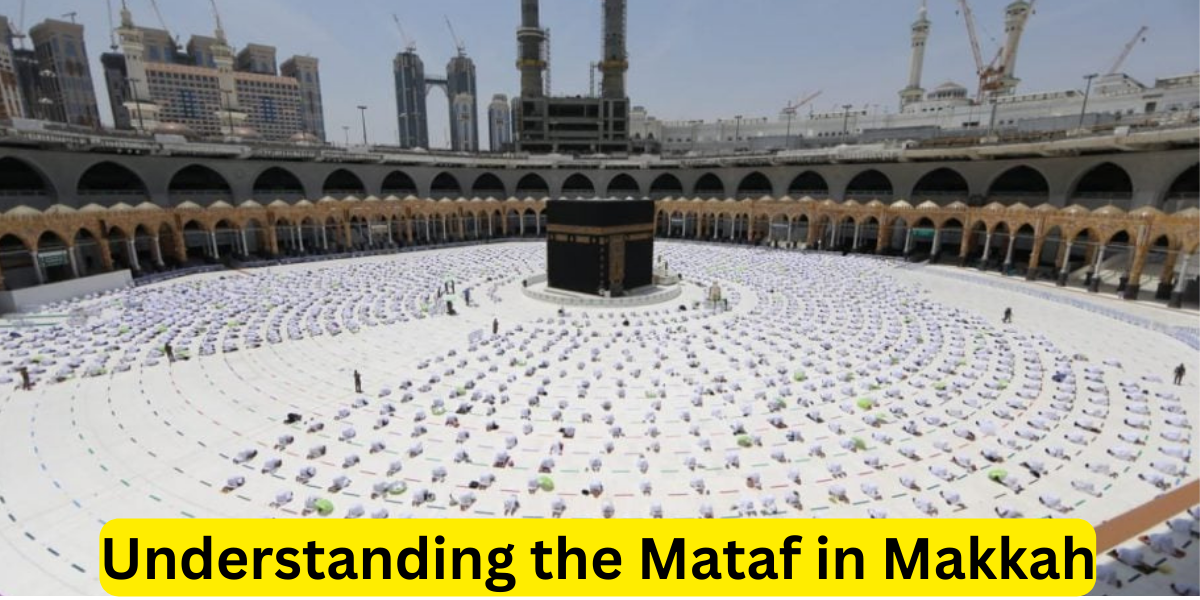In the heart of Makkah, the holiest city in Islam, stands the magnificent structure of the Masjid al-Haram, or the Grand Mosque. Millions of Muslims from around the world embark on the spiritual journey of Hajj or Umrah to this sacred site every year. Within the Grand Mosque lies a significant area known as the “Mataf,” a central space that holds immense religious and historical significance. In this article, we will delve into the meaning and importance of the Mataf in Makkah.
What is Mataf?
The term “Mataf” refers to the circumambulation area around the Kaaba, the most sacred site in Islam. The Kaaba is a cube-shaped building covered in black cloth, located at the center of the Masjid al-Haram. Muslims believe that the Kaaba was built by the Prophet Ibrahim (Abraham) and his son Isma’il (Ishmael) as the first house of worship dedicated to the One God, Allah.
During the Hajj pilgrimage and Umrah, one of the essential rituals is known as “Tawaf,” which involves walking around the Kaaba seven times in a counterclockwise direction. The Mataf is the designated space where these Tawaf rituals are performed. It is paved with beautiful marble and has a unique curvature to accommodate the massive crowds that gather during the pilgrimage seasons.
The Kaaba, often rent a car in makkah to as the House of Allah, holds deep religious and historical significance for Muslims. It is believed to be the first house of worship ever built and is considered the most sacred site in Islam. Muslims around the world face towards the Kaaba during their daily prayers (Salah), symbolizing their unity and connection to the holy city of Makkah.
The Spiritual Significance
The Mataf holds immense spiritual significance for Muslims worldwide. It represents the unity of the Islamic community, as millions of Muslims, regardless of their nationality, race, or social status, come together to perform the Tawaf. The sight of believers from diverse backgrounds gathered in one place, moving harmoniously around the Kaaba, is a powerful symbol of the universality of Islam and the idea of brotherhood among Muslims.
For the pilgrims, walking around the Kaaba in the Mataf is a deeply spiritual experience. It is believed that performing the Tawaf purifies the heart, cleanses the soul, and strengthens the bond with Allah. Many pilgrims are moved to tears as they witness the magnificence of the Kaaba and reflect on the profound history and symbolism it carries.
Undertaking the Hajj pilgrimage is a significant undertaking that requires meticulous planning and preparation. Pakistani pilgrims usually register through the government’s designated Hajj from Pakistan authorities or private tour operators approved by the Saudi Arabian government.
The Historical Significance
The Mataf has witnessed numerous historical events throughout Islamic history. The area around the Kaaba has undergone various expansions and renovations to accommodate the ever-increasing number of pilgrims. Over the centuries, rulers and leaders of Muslim empires have contributed to the development and preservation of the Grand Mosque and the Mataf.
The Kaaba itself has been rebuilt several times due to natural disasters and human interventions, but its sanctity and spiritual significance have remained constant. Throughout history, the Mataf has been a focal point for Islamic scholarship and cultural exchange, attracting scholars and travelers from different parts of the Muslim world.
In conclusion, the Mataf in Makkah is a sacred space of unity and spirituality. It serves as the circumambulation area around the Kaaba, the most sacred site in Islam. Performing the Tawaf in the Mataf during the Hajj pilgrimage or Umrah is a deeply spiritual experience for Muslims, signifying their unity and devotion to Allah.
The Mataf historical significance reflects the rich tapestry of Islamic history and the enduring importance of the Masjid al-Haram in the lives of Muslims worldwide. It remains a place where the faithful gather to seek solace, inspiration, and a deeper connection with their faith.


